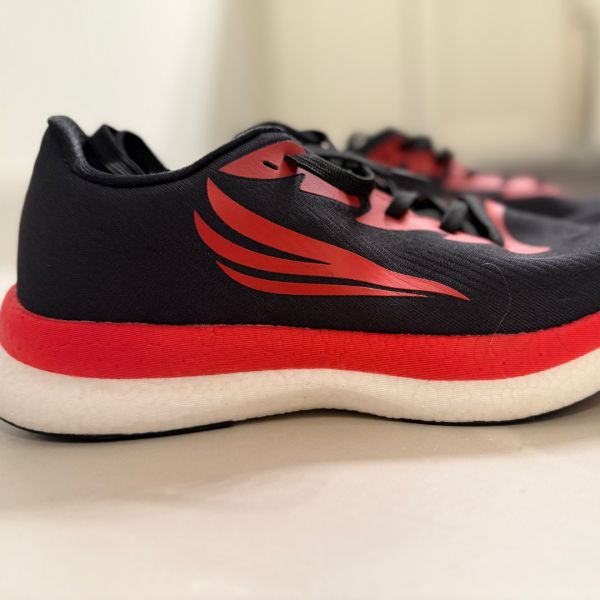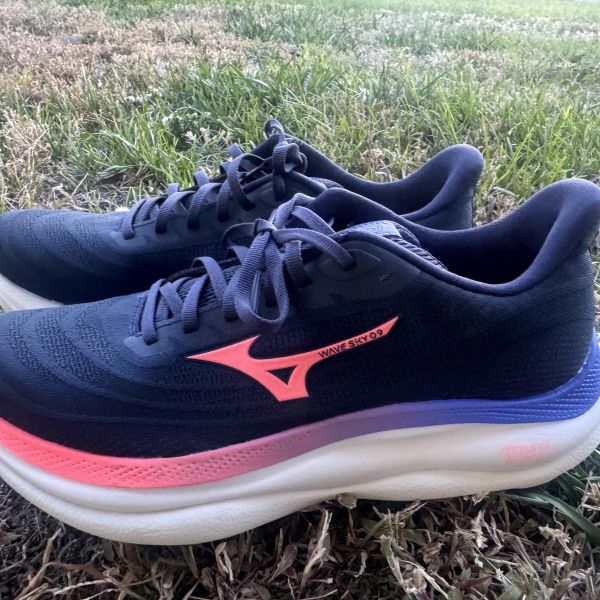
I’ve been curious about the adidas Adizero Adios Pro Evo 1, but that $500 price tag? Yeah, no thanks. The Adios Pro Evo 1 is supposed to be the next big thing in racing shoes. While super-stack shoes are all the rage, nothing’s really touched the featherlight standards of old-school racing flats. It’s wild to think I used to race in shoes that weighed under 4 ounces.
The Adios Pro Evo 1 is the first super shoe under 5 ounces and the first to slap you with a $500 bill. Are they worth it? Are they that good? I miss lightweight shoes and I've really struggled to find a 2024 racing shoe that I love. Maybe I just miss the simplicity of the 2015 racing flats. (I need to remember that is coming up on 10 years ago).
adidas Adizero Adios Pro Evo 1 Quick Facts
Just looking at the mesh upper, you can tell where they shaved weight. It’s so thin you can see your socks and maybe even your toenails. One wrong move and I thought I’d rip it, that didn’t happen, but I still handle them like they’re made of tissue paper.
The best running shoe uppers disappear off your feet and for the most part that happens but I've found a couple of issues. The thin, ungusseted tongue can bunch up if you’re not careful. I take a minute to smooth it out before racing. The other issue is it's narrow. I never really found I was super comfortable in it.
Fit-wise, I float between a women’s 10–11 wide, and the men’s 9.5/10.5 was the best fit. They fit true to size, though they might feel a bit narrow. If you have wider feet, you'll want to go up a half to full size.
This is where the shoe gets interesting and expensive. The midsole uses a special Lightstrike Pro foam made to be ridiculously light and cushioned. It feels fine at marathon pace, but it’s not as springy as I expected. If you aren’t pushing hard, the shoe feels clunky. Even at 6 minute pace, it felt cumbersome and like I was lifting a cinderblock off. Definitely not a jog-around-the-block kind of shoe.
The rockered design helps with smooth transitions, but the shoe shines only when you’re running fast. Anything slower and you’ll wonder why you spent $500.
Honestly, this is a goal-race shoe. One workout, one marathon, maybe a couple of half marathons if you’re lucky. It’s not your season-long workhorse. You can use it for shorter races, but you’ll burn through them quickly.
The outsole? Barely there. It’s mostly exposed foam with a hint of rubber, which keeps the weight down but kills durability. I saw wear after 8 miles. These shoes are designed for one workout and one marathon, so around 50 miles. Either they'll just straight up fall apart at 51 miles (LOL), or you won't get the benefit of the $500 shoe.
Just looking at the bottom, you can tell traction isn’t great. I constantly worried I’d wipe out on a turn. In fact, one of the days I used them on the wet track I thought I was going to pull something. Stick to dry, smooth roads...no rain, no gravel, no nonsense.
The adidas Adizero Adios Pro Evo 1 is cutting-edge, no doubt. It’s light, efficient, and built for elites chasing PRs. But for most runners, it’s not practical. The price is steep, and the durability? Yikes. Unless you’re running at top speeds, it won’t feel much faster than cheaper, longer-lasting options.
Honestly, I’m kind of relieved it’s not my go-to. Racing is expensive enough without dropping $500 on shoes that barely last a race.
Who Should Buy It:
Who Should Skip It:
I was paid to write an honest shoe review of my choice.
Abigail Lock I'm curious about your observations with respect to the shoe's breakdown. You said that it's only good for about 50 miles. Is that because of the foam compression primarily? What other signs of wear do you see, and how does that impact the shoe's ability to phased out as a racing shoe and more as a trainer? I've always been a bit suspect about the idea that a carbon-plated shoe is rendered entirely useless after X miles...while it may not have the "pop" it once did, they can still be run in--at least that's my experience.
Login to your account to leave a comment.






We Want to Give it to You!
